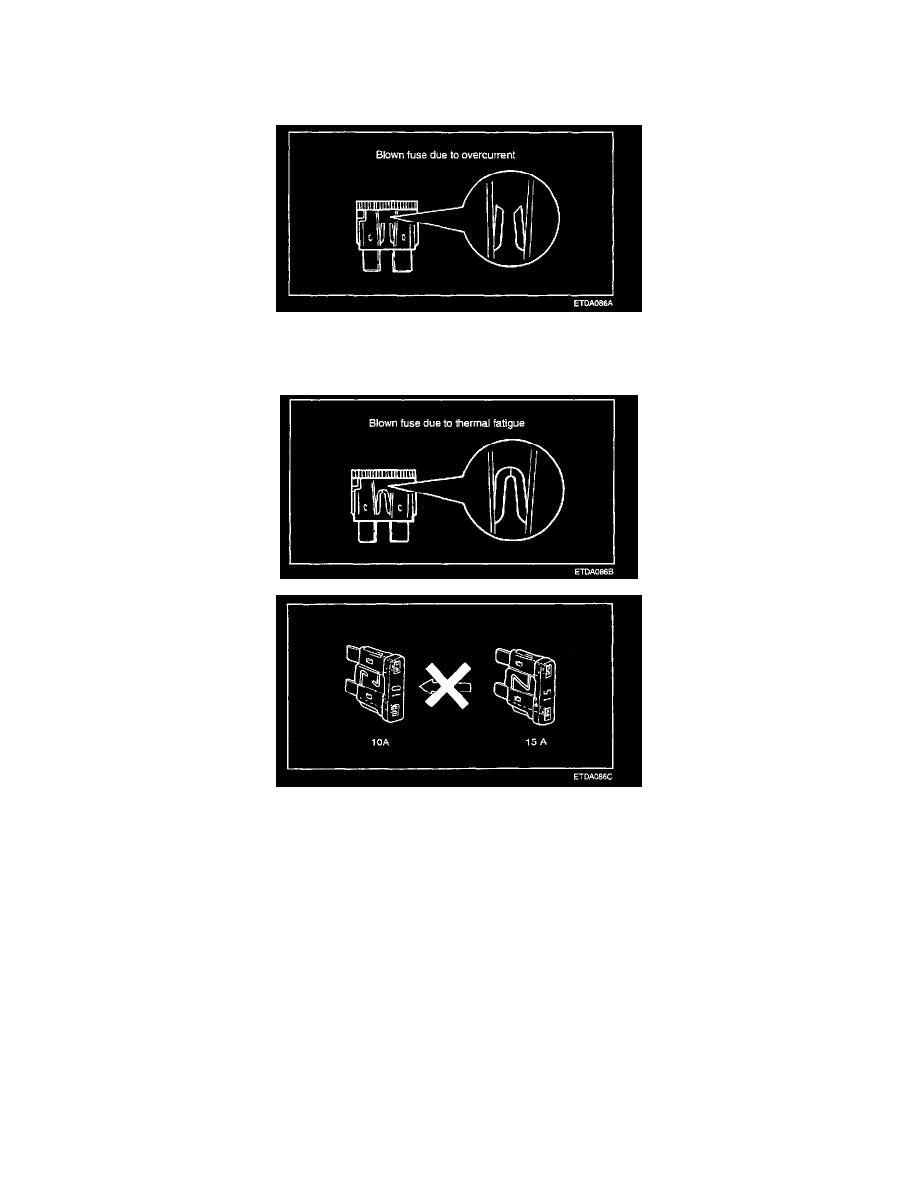Sonata GLS V6-2.7L (2002)

Fuse: Testing and Inspection
INSPECTION OF FUSES
When a fuse is blown, there are two probable causes. The two causes can easily be determined by a visual check after removing the fuses.
1. Fuse blown due to over-current
Prior to replacing the fuse with a new one, check the circuit for a short and the related parts for abnormal conditions. Only after the correction of a
short or replacement of abnormal parts, should a fuse with the same ampere rating be installed.
2. Fuse blown due to repeated on-off current
Normally, this type of problem occurs after a fairly long period of use, and is less frequent than #1 above. In this case, you may simply replace
with a new fuse of the same capacity.
WARNING: A blade type fuse is identified by the numbered value in amperes. If the fuse is blown, be sure to replace a fuse with the
same ampere rating. If a fuse of higher capacity than specified is used, parts may be damaged and a danger of fire exists. To remove or
insert a fuse, use the fuse puller in the fuse box.
